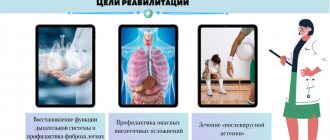Anonymously
Around the clock
Attention! The material contains information about substances, the use of which can cause serious harm to your health!
To most people, smoking cigarettes seems to be nothing more than a bad habit. Meanwhile, nicotine is officially classified as a seriously addictive alkaloid, on a par with cocaine, caffeine and quinine. All of these substances have a significant effect on the functioning of the nervous system.
Today, tobacco addiction is considered one of the most difficult to treat, since nicotine forms a very serious psychological attachment, affecting our unconscious behavior and even the area of reflexes.
- Nicotine overdose: what is it?
- Causes of nicotine poisoning
- Symptoms of cigarette overdose
- Stomach hurts after smoking
- Gag reflex when smoking
- Chest pain after smoking
- Weakness after cigarettes
- Fainting from smoking
- Nausea after cigarettes: reasons
- Sick of menthol cigarettes
- Sick of electronic cigarettes
- Overdose from vaping
- Nicotine hit
- Signs of acute nicotine poisoning
- Consequences of nicotine overdose
- Lethal dose of nicotine for humans
- Allergy to nicotine
- First aid for nicotine poisoning
- Treatment of nicotine poisoning in
Base
- Narcologist on call 24/7, within 40 minutes
- Consultation with a narcologist
- Dropper 500 ml
- Purpose of therapy
- Tablet course for three days
- Monitoring the patient's condition after the procedure
4,700 RUB
Call a doctor
Standard
- Narcologist on call 24/7, within 40 minutes
- Medical examination
- Consultation with a narcologist
- Dropper 1000 ml
- Purpose of therapy
- Tablet course for three days
- Monitoring the patient's condition after the procedure
5900 RUB
Call a doctor
Intensive
- Narcologist on call 24/7, within 40 minutes
- Medical examination
- Consultation with a narcologist
- Dropper 1500 ml
- Purpose of therapy
- Tablet course for three days
- Monitoring the patient's condition after the procedure
8900 RUB
Call a doctor
Standard
- 6-bed ward
3,000 RUB
Comfort
- 2-bed ward
RUB 5,500
VIP
- 1-bed ward
8,000 RUB
We will select an individual treatment plan
Free consultation 8-800-200-27-23
The pleasant sensations caused by the first cigarettes smoked pass very quickly. To get them back, a person increases the frequency of smoking, which can lead to an overdose. The number of cigarettes smoked also increases during times of stress, when performing hard or responsible work, or in a state of psychological depression.
Nicotine overdose: what is it?
When smoking tobacco, the dangerous alkaloid enters the brain in just 7-8 seconds, since the blood-brain barrier cannot contain it. The incoming nicotine provokes increased production of dopamine, so the person experiences some pleasure.
When large dosages of this substance are consumed, it begins to block the activity of the autonomic ganglia, which leads to general intoxication of the body and the appearance of symptoms similar to general poisoning. With frequent abuse of nicotine, this substance penetrates into all cells and organs, even entering bone and muscle tissue.
Nausea from caffeine
The caffeine contained in beans is a strong energy booster. When it enters the body, it promotes a surge of strength, increases heart rate and breathing rate, and activates the release of adrenaline. All this can lead to disastrous consequences. The appearance of headaches, insomnia and nausea.
In addition, a high concentration of caffeine removes fluid from the body. This leads to dehydration, one of the main causes of nausea.
How to avoid this? Reduce the amount of coffee you drink and reduce its strength. Add dairy products - milk, cream, etc. In coffee with milk, the effect of caffeine is significantly lower.
Causes of nicotine poisoning
Nicotine intoxication can be acute or chronic. The first is due to the intake of a large amount of tobacco toxins into the body over a short period of time. In the second form, cigarette poisoning occurs regularly when a person smokes too much tobacco daily
The reasons for the appearance of signs of acute intoxication may be:
- Smoking cigarettes on an empty stomach;
- Excess nicotine in the body (consuming a large dose of nicotine in a short period of time);
- Child eating tobacco;
- Combining anti-smoking products (patches, chewing gum, etc.) with nicotine and smoking cigarettes;
- Failure to comply with safety measures when working with insecticides containing nicotine, as well as in the production of tobacco products.
Chronic nicotine poisoning can occur not only in heavy smokers, but also in their family members who have to constantly inhale tobacco smoke. When smoking cigarettes, toxic compounds such as arsenic, hydrocyanic acid, and methanol are released into the air. They complicate poisoning both in smokers themselves and in “passive smokers” who inhale cigarette smoke.
REHABILITATION
Other reasons for this condition
Anyone can experience a feeling of nausea, which for some reason appears after drinking a strong drink. And even if previously the body normally accepted this product that was ingested, then due to the hormonal surges that occur, the situation may change.
Most often this happens to women who at first cannot determine the causes of nausea. Their body is more prone to hormonal imbalances, especially during menstruation and pregnancy. At such a moment, a general unpleasant sensation may appear and an aftertaste may develop after drinking a cup of strong coffee drink.
Nausea from ground or instant coffee can also occur if consumed excessively with milk. Especially if there is a very short period of time between the cups you drink. As a result, an excess amount of caffeine accumulates inside the body, which provokes nausea.
To prevent this problem, it is necessary to follow the recommendations regarding the correct consumption of coffee throughout the day. At least three hours should pass between drinking cups of this drink. Otherwise, caffeine will not have time to be eliminated from the body. There is no need to make coffee too strong and add a lot of heavy cream or milk.
Symptoms of cigarette overdose
Nicotine intoxication occurs when too much of this substance enters the body. The body cannot cope with so many toxins, poisoning occurs. It does not matter in what form the nicotine was consumed - from cigarettes, nicotine patch, gum, nasal spray or inhaler.
In case of chronic nicotine overdose as a result of frequent cigarette smoking, the following symptoms are most often observed:
- anxiety state,
- the appearance of cold sweat,
- acute headaches,
- dizziness,
- muscle twitching,
- tingling under the skin,
- increased heart rate and pulse,
- increased blood pressure,
- fatigue, weakness,
- poor appetite
- pressing pain in the chest area,
- nausea, vomiting, diarrhea,
- stomach pain,
- breathe heavily,
- hearing or vision impairment may occur.
If one or more of the listed symptoms appears, you should immediately contact a narcologist.
Stomach hurts after smoking
Nicotine is a poison, and in large quantities it leads to disruption of intercellular metabolism, which leads to cell starvation. As a result, a person may experience headaches, muscle pain, and stomach pain.
Gag reflex when smoking
The symptoms of nicotine poisoning are similar in many ways to food poisoning. The body strives to remove toxic substances, so it uses all its resources. And its first action is the gag reflex, which clears the stomach of all contents, which allows reducing the concentration of nicotine in the body.
Chest pain after smoking
Due to smoking, the human lungs suffer the most, since the main dose of toxins falls on this organ. Therefore, heavy smokers often experience chest pain.
Weakness after cigarettes
Alkaloids disrupt the functioning of all organs and systems, establishing oxygen and vitamin-mineral metabolism between cells. At the same time, the body throws all its strength into the fight against toxic substances. For these reasons, a person experiences weakness and fatigue.
Fainting from smoking
A large dose of nicotine can lead to muscle spasms in the respiratory system. As a result of an acute lack of oxygen, a person loses consciousness and faints. In some cases, this condition can develop into a coma and even lead to death.
Find out treatment recommendations without leaving home for free
To select a treatment plan, you just need to leave a request, we will contact you to select the time and specialist you need
Submit your application
When the body is not friendly with milk: what is lactose intolerance?
Are you suffering from cramps and bloating? Do you hear rumbling in your stomach? Do you occasionally worry about loose stools? If these signs appear some time after drinking milk and milk-containing products, lactose intolerance (hypolactasia) can be assumed.
Why does such a pathology occur and can it be avoided? Let's figure it out.
Lactose (milk sugar) is a substance found in the milk of mammals and humans. The role of lactose in the body is great: it helps the absorption of certain minerals, including calcium, in the intestines, and also promotes the proliferation of lactobacilli necessary for the body.
Normally, in all babies, lactose is broken down in the small intestine by a special enzyme - lactase. As people age, the amount of lactase in some people's bodies decreases.
It is difficult to imagine the diet of a modern person without dairy products, and the presence of this enzyme in the body is extremely important for the normal digestion process.
The mechanism of development of hypolactasia
Lactose intolerance occurs when there is a complete absence or insufficient amount of lactase. The task of this enzyme is to participate in the conversion of lactose in the small intestine into glucose and galactose. These carbohydrates are able to penetrate the intestinal wall into the bloodstream.
With a deficiency or absence of lactase, milk sugar in an undigested form enters the large intestine, where it becomes “food” for the bacteria living here. The result of the processing of lactose by bacteria is carbon dioxide, methane, hydrogen and water. Gases formed in the lumen of the large intestine stretch its walls, causing bloating (flatulence) and pain in it, and water causes the development of diarrhea (loose stools).
Lactose intolerance is much less common in children than in adults. It can be congenital or acquired. Alactasia, or the complete absence of the enzyme, is associated with a structural disorder of the lactase gene. In this case, the baby should receive lactose-free nutrition from birth. Fortunately, this disease is quite rare. More often one can observe the functional immaturity of the enzyme system of infants, causing insufficient milk tolerance; some time after birth, the amount of enzyme increases and the breakdown of lactose improves.
Acute and chronic intestinal infections, immune, inflammatory, and atrophic processes in the intestines can lead to secondary (acquired) intolerance to milk sugar.
Factors such as age, ethnicity (in the countries of North America, Africa, and Southeast Asia the percentage of people suffering from hypolactasia are higher), and premature birth increase the risk of developing this pathology.
How does lactose intolerance manifest?
Rumbling in the stomach and distension, diarrhea, nausea, vomiting, abdominal pain, headaches - these symptoms of lactose intolerance occur in some people an hour after taking whole milk or dairy products (cheese, cottage cheese, kefir, ice cream).
The higher the degree of hypolactasia, the more intense the clinical manifestations. However, it should be remembered that such a reaction of the body can also be caused by the consumption of stale products that have expired or are incompatible. In both cases, if you have the symptoms mentioned above, you should consult a doctor.
Diagnosis of lactose intolerance
A biopsy of the small intestinal mucosa is a direct way to measure the activity of the lactase enzyme it contains. Due to the traumatic nature and complexity of this study, it is used during operations or other life-saving interventions.
Genetic tests can identify genes that block lactase production.
One of the common indirect tests for lactose intolerance, among others, is the lactose load test. It is based on a comparison of blood glucose levels in an adult before the study and after ingesting 50 grams of lactose dissolved in 0.5 liters of water. If lactose is broken down and the resulting glucose is absorbed into the blood, the glucometer will show an increase in blood glucose. Otherwise, we can conclude that lactase does not work.
How to treat lactose intolerance?
Primary hypolactasia is a type of normal, not a disease, so there is no specific treatment for this form of lactose intolerance, but it is necessary to follow a lactose-free diet. Secondary hypolactasia is corrected by treating the underlying disease that led to its development. Taking the missing enzyme in the form of tablets and drops must be combined with a balanced diet developed by a nutritionist.
Do not forget that with a mild degree of lactose intolerance, you can avoid the occurrence of unpleasant symptoms if you reduce the amount of whole milk you drink and include lactose-free cheese, cottage cheese, kefir, and yogurt in your diet. Eating milk porridge will cause much less consequences than a glass of milk, since lactose will enter the intestines in portions, and its processing will be more efficient.
Nausea after cigarettes: reasons
Nausea after smoking is due to the entry of toxins into the body. The following reasons can provoke it:
- spasm of the gastric walls caused by their irritation by substances ingested with saliva;
- irritation due to gastrointestinal ulcer;
- activation of the adrenal glands due to an increase in dopamine in the blood;
- constriction of blood vessels in the brain caused by smoke entering the body.
- contraction of the intestinal muscles, which occurs during poisoning;
- diseases of the oral cavity.
Sick of menthol cigarettes
The danger of menthol cigarettes is that they reduce the harshness of tobacco smoke, which reduces the unpleasant moments of smoking and provokes people to use tobacco products more often. At the same time, the level of nicotine in menthol cigarettes does not differ from conventional analogues. Therefore, nausea from menthol cigarettes is a sign of toxin poisoning.
Sick of electronic cigarettes
Electronic cigarettes are considered a safer replacement for traditional cigarettes. However, their dressing contains a large amount of toxins harmful to humans, which also cause poisoning. Nausea when smoking them is explained by the body’s reaction to the intake of harmful toxins.
Hypertension
Nausea from coffee can be caused by increased arterial and intracranial pressure. Scientists have proven that coffee drinks in small quantities do not affect the manifestation of hypertension and make blood vessels elastic. High blood pressure is caused by a combination with poor diet, stress, excess weight, and alcohol abuse. You need to worry if symptoms appear with nausea: dizziness, weakness, rapid heartbeat.
Recommendations:
- Eat right, give up alcohol, lead a healthy lifestyle.
- Contact your doctor, he will prescribe treatment and determine the possible amount of dangerous food and drinks you may consume.
Nicotine hit
If after smoking a person begins to feel dizzy, has nausea and the urge to vomit, breaks out in a cold sweat, and the skin becomes pale, it means that a nicotine kick has occurred. It can be caused by the following reasons:
- smoking several cigarettes in a row;
- smoking on an empty stomach,
- smoking immediately after a good night's sleep.
This condition has an extremely negative effect on the functioning of the entire body, especially the heart and brain. It can cause the development of hypertension, atherosclerosis, endarteritis or the appearance of malignant tumors.
CODING FROM SMOKING
Coffee on an empty stomach
Lovers of the morning coffee ritual do not understand the danger to their health. Coffee drunk on an empty stomach causes serious damage to the digestive, nervous, and blood systems.
Effect on the gastrointestinal tract
The primary connection between coffee and nausea is that coffee is a strong gastrointestinal irritant and can cause stomach upset, including nausea.
When coffee enters an empty stomach, it stimulates the release of hydrochloric acid in the digestive system. Hydrochloric acid is used to break down food. Drinking coffee drinks on an empty stomach leads to indigestion and insufficient protein breakdown. Proteins that get stuck in the digestive system and are not completely dissolved cause health problems ranging from bloating, nausea, irritable bowel disease to colon carcinoma, gastritis, and ulcers.
Human gastrointestinal tract
Coffee Antioxidants
The antioxidant properties contained in coffee drink, derived from chlorogenic acid, help maintain health and treat colon cancer. Drinking coffee on an empty stomach has the opposite effect.
Cortisol
Drinking an invigorating drink on an empty stomach causes the stress hormone cortisol to be released directly into the bloodstream. Cortisol is needed to produce energy and maintain health. If the level constantly increases, cortisol gradually reduces serotonin reserves, leading to depression, excess weight, and deprives sleep.
Recommendations
- Do not drink coffee on an empty stomach; it should be consumed with food, before or after meals.
- Drink a glass of water during, after coffee. The body receives the necessary water, reduces the risk of nausea, water provides increased energy, and there is no need for an additional cup of an invigorating drink.
- Use dark roast coffee beans. Darker roasted beans have low acidity. Chemicals created during the roasting process make it difficult for stomach acid to form.
- Use coffee blends designed for people with stomach problems. They are “softer” for the digestive system and cause fewer attacks of nausea.
Signs of acute nicotine poisoning
When consuming large amounts of nicotine in a short period of time, acute intoxication occurs due to a sharp increase in the level of toxins in the blood. In this case, the person experiences the following symptoms:
- pale skin;
- unsteadiness of gait, loss of coordination;
- sudden jumps in blood pressure and pulse;
- increased sweating;
- pain in the abdomen, head, muscles;
- the appearance of convulsions, shaking hands;
- blue discoloration in the area of the nasolabial triangle;
- impaired vision, swallowing, speech.
If you suspect acute nicotine intoxication, you should immediately seek medical help.
Consequences of nicotine overdose
Large doses of nicotine and cases of intoxication with this substance can lead to the development of the following diseases:
- diseases of the cardiovascular system;
- hypertension;
- disorders of the thyroid gland;
- liver or kidney disease;
- asthma;
- diabetes;
- chronic respiratory diseases, including cancer.
A state of acute intoxication can lead to paralysis of the muscles responsible for the functioning of the respiratory organs or heart, which will lead to respiratory arrest and falling into a coma. Without timely medical intervention, death from poisoning occurs.
Lethal dose of nicotine for humans
The lethal dose for humans is 0.5 – 1 milligram of nicotine per kilogram of weight.
When smoking one cigarette, a person receives approximately 1 milligram of this substance.
When nicotine intoxication occurs, the prognosis depends on the following factors:
- dose taken,
- age of the victim,
- general health, presence of concomitant diseases,
- duration of intoxication (before medical assistance is provided).
Allergy to nicotine
Cigarette smoke contains many toxic compounds that can cause serious allergies. Intolerance to any toxin can develop in smokers and against the background of a decrease in general immunity.
When an allergy to tobacco appears, it is not enough for a person to completely quit this bad habit, but also try to isolate himself from inhaling cigarette smoke when being near other smokers.
First aid for nicotine poisoning
If signs of nicotine poisoning appear, you should immediately call an ambulance. Before the doctors arrive, the following measures should be taken:
- Place the victim on the floor or other horizontal surface. To prevent vomit from entering the respiratory tract, you need to turn it on its side.
- To make breathing easier, you need to unfasten the collar of your clothing and loosen the belt.
- If the person remains conscious, you need to give him a weak solution of potassium permanganate to drink, which will provoke gag reflexes.
- After cleansing the stomach, it is necessary to give the victim activated carbon or another sorbent used for poisoning.
- You need to constantly talk to the patient, preventing him from falling asleep.
When the medical team meets, it is necessary to inform about the approximate dose of nicotine consumed and the measures already taken. Mild intoxication can be treated at home or on an outpatient basis. But if the victim’s condition may threaten his life, then treatment will be carried out in a hospital.
Features of parosmia with coronavirus
Complete loss of smell and taste are distinctive symptoms of coronavirus infection. Most people with complete loss of smell (called anosmia) due to COVID-19 find that their senses return to normal over time. However, in some cases, the sense of smell and taste return, but in a distorted form - this is parosmia after an illness.
Nearly half of COVID-19 patients in one study reported parosmia approximately 2.5 months after initial infection. According to many, the smells were disgusting, similar to rotting flesh. Another international study found that 7% of patients reported a distortion in their sense of smell immediately after contracting COVID-19. The time it takes for parosmia to go away after coronavirus lasts on average several weeks.
References:
- Guide to addictionology / Axelrod B. A. et al. / ed. V. D. Mendelevich. - St. Petersburg: Speech, 2007.
- Information technology for liberation from alcohol and nicotine addiction, depression / M. A. Tetyushkin / “LitRes”, 2014.
- Geppe N. A. Tobacco smoking in children and adolescents: impact on health status and prevention // Practical Pulmonology. – 2007. – No. 3. – P.15-19.
- Nicotine addiction / (psychoactive addictions) / [comp. N. N. Boyko]. – Ed. 2nd, rev. and additional / Moscow: Native Country, 2009. – 198, [1] p. : ill., table. (Russian Security).
Article verified by an expert
Terekhova Anna Vladimirovna
psychologist-consultant on socio-psychological work with addicted clients and their families. More than 10 years of experience.
Similar articles:
Art therapy in the treatment of addictions
Program according to the Shichko method
Why can't you completely control a drug addict?
Male alcoholism
Children's drug addiction











